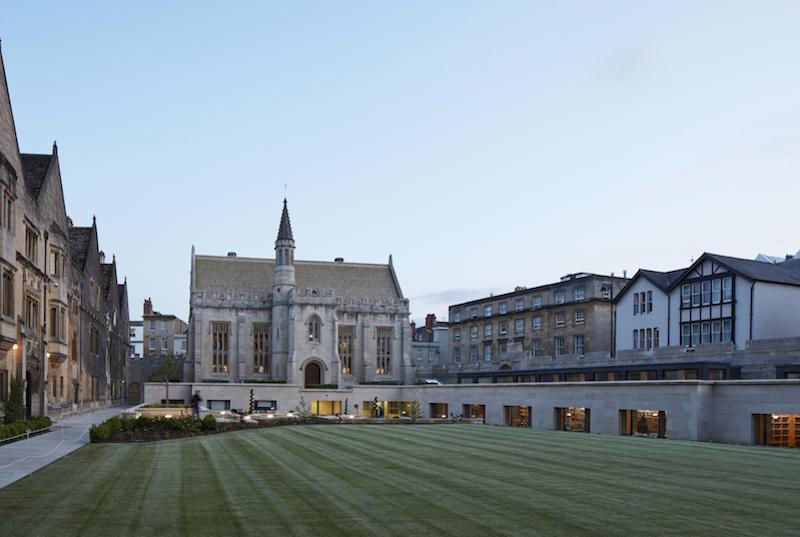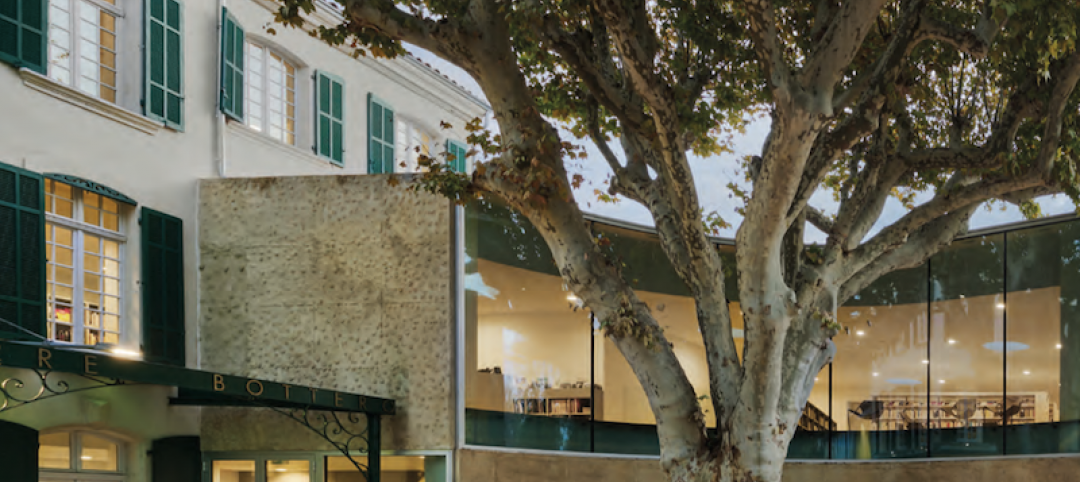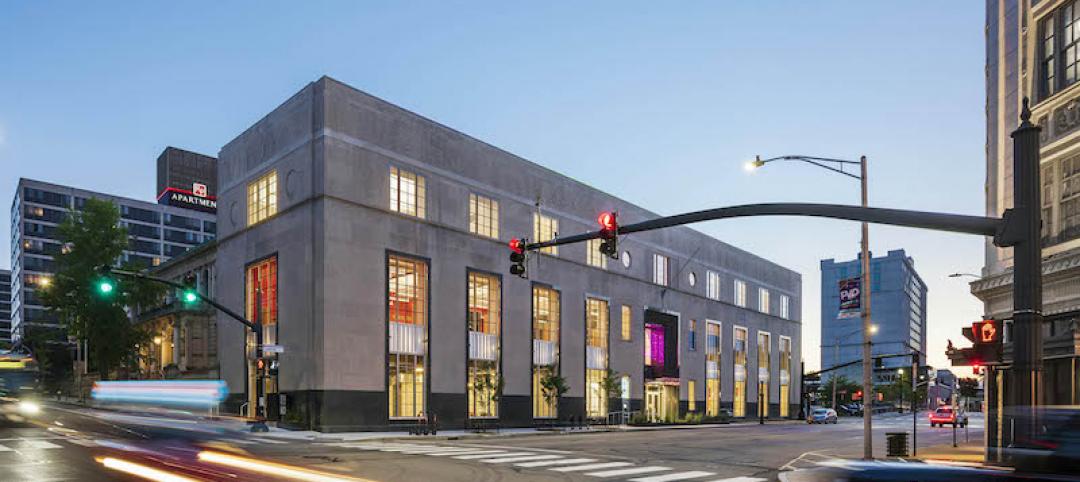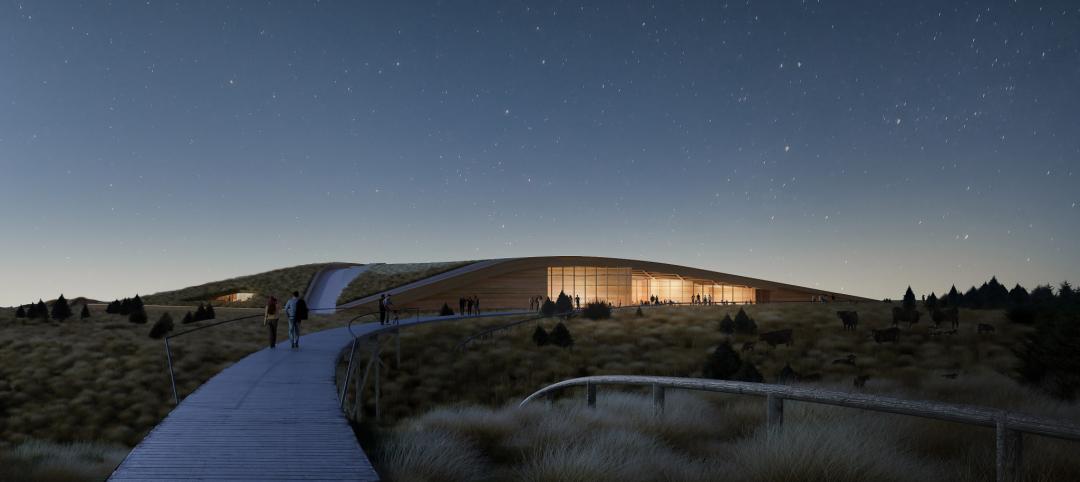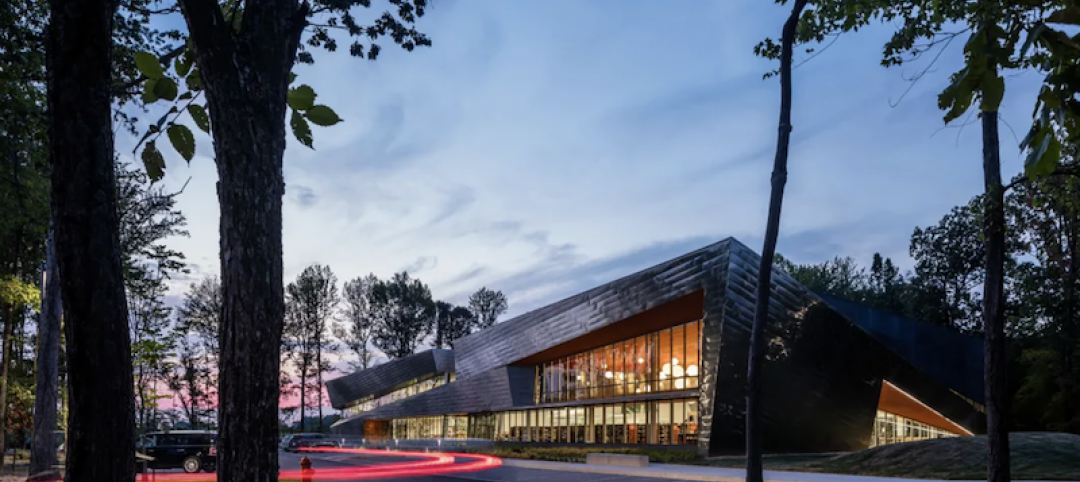Longwall Library at Magdalen College University of Oxford, a Grade II* listed building, has been updated to better suit the building to the needs of modern day students. The project involved renovating the existing building and creating a new extension and landscaping plan.
The historic building, which was constructed in 1851 and converted into a library in 1930, had a leaky roof, a floor plate that cut across windows blocking light and ventilation, limited accessibility, and poor insulation. As a result, it was no longer considered fit for purpose.
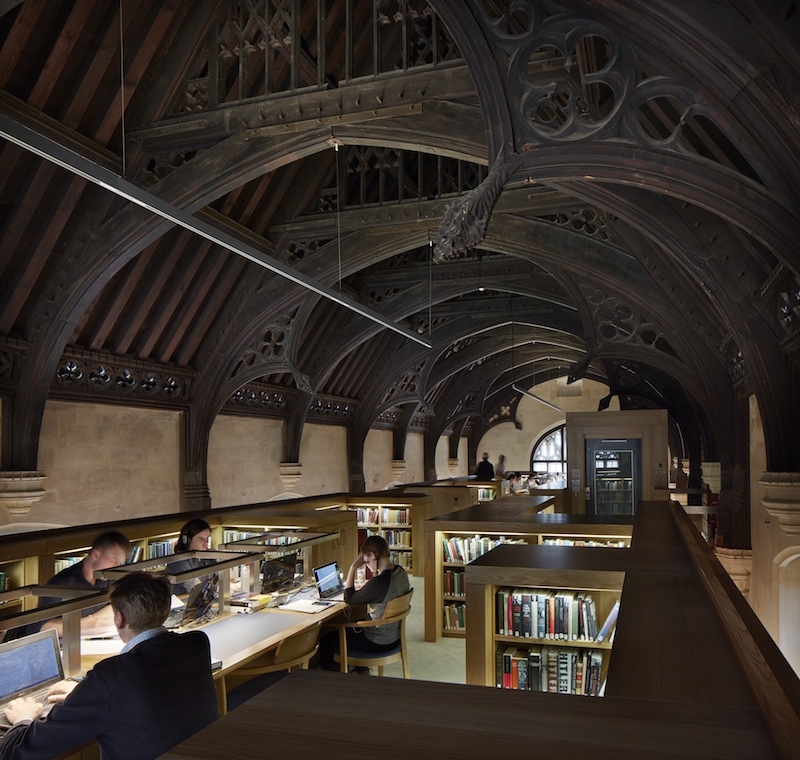 Photo: © Dennis Gilbert.
Photo: © Dennis Gilbert.
Wright & Wright Architects was in charge of the improvement project and created a scheme that took the form of a giant inhabited bookcase and inserted it within the shell of the original 1851 building. A plinth-like extension was also created that extends into the campus’s quad. The Victorian architecture of the building was restored, which included the roof being re-laid with tiles in local Cotswold Stone placed over new insulation. The updated building is passively controlled and achieved an air tightness of 3.7m3/h.m2.
The insertion and new extension create accommodation for 120 readers, group working areas, seminar spaces, staff facilities, and storage for 3,200 linear meters of shelving, half of which is high density mobile storage racks.
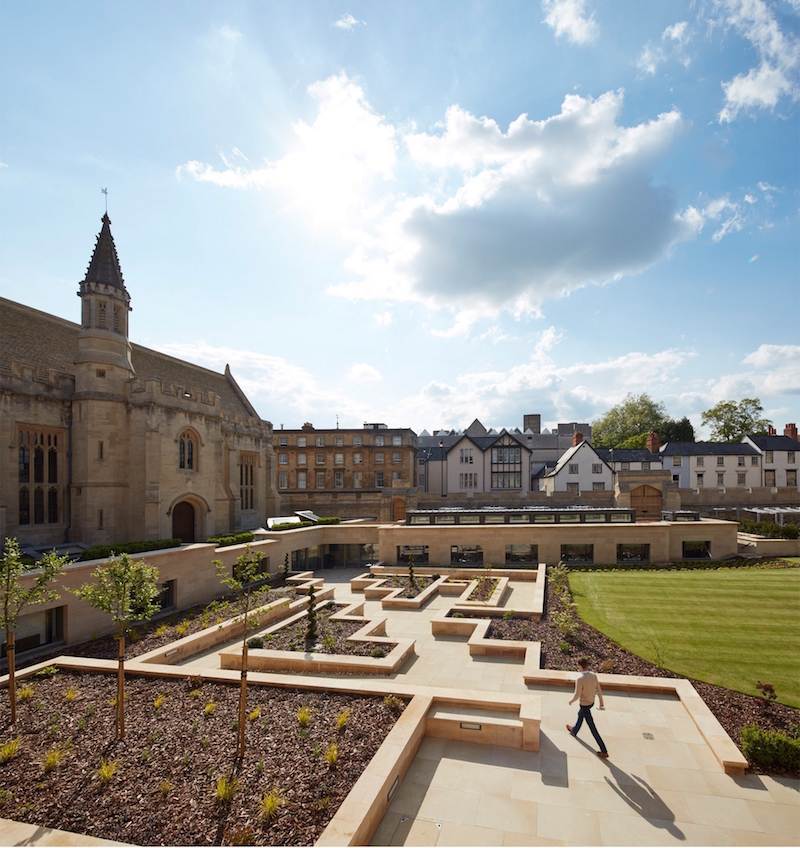 Photo: © Dennis Gilbert.
Photo: © Dennis Gilbert.
The landscaping work includes lush planting and stone seating to create an outdoor common area in a formerly neglected corner of the campus.
Additional improvements:
- Restored the windows to their full height
- Introduced air through low-level windows
- Opened up the original eaves ventilation, chimneys, and spiral staircase to use every cavity
- Added opening roof lights concealed behind the parapet
- Added insulation to the roof and beneath the floor
- Introduced secondary glazing carefully composed behind the existing glazing
- Integrated small, low-energy heaters at readers’ feet
- Incorporated LED lights and user-controlled PIR to improve efficiency
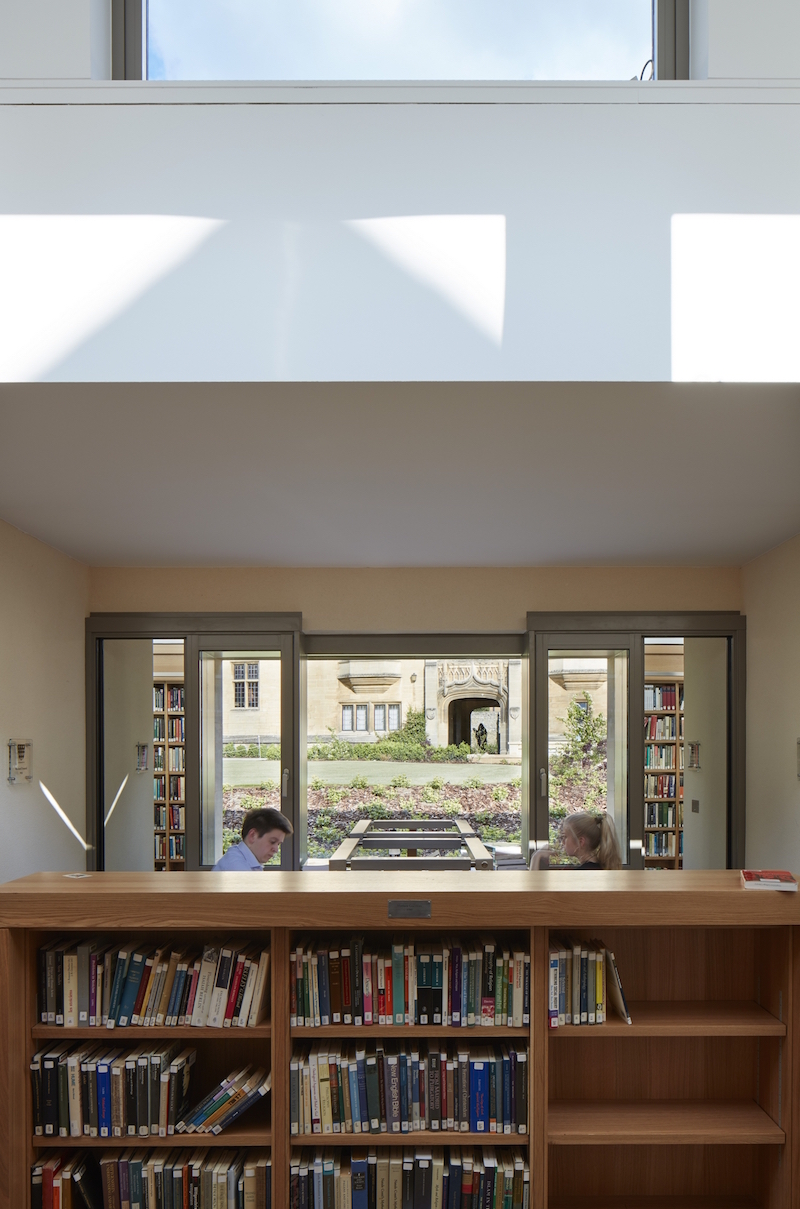 Photo: © Dennis Gilbert.
Photo: © Dennis Gilbert.
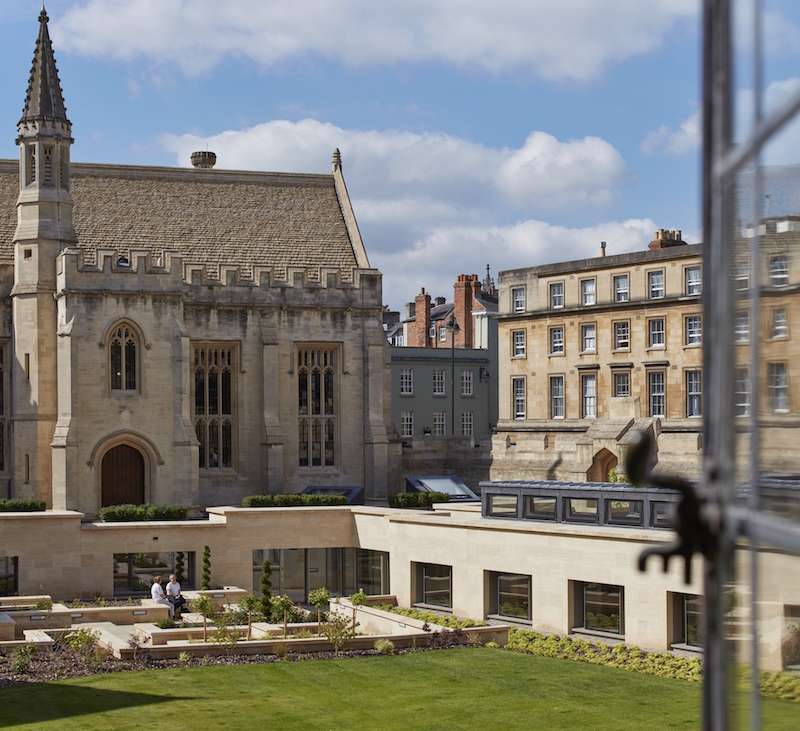 Photo: © Dennis Gilbert.
Photo: © Dennis Gilbert.
Related Stories
Giants 400 | Dec 3, 2020
2020 Cultural Facilities Giants: Top architecture, engineering, and construction firms in the U.S. cultural facilities sector
AECOM, Arup, and Populous head BD+C's rankings of the nation's largest cultural facilities sector architecture, engineering, and construction firms, as reported in the 2020 Giants 400 Report.
Libraries | Nov 30, 2020
Adjaye Associates reveals design of the Thabo Mbeki Presidential Library
The project is located in Johannesburg.
Libraries | Oct 22, 2020
Envisioning libraries as community hubs
In the following, HGA Vice President and Senior Designer Jane Dedering discusses her passion for libraries, community engagement, and how the current pandemic will influence libraries moving forward.
Libraries | Oct 21, 2020
Hôtel particulier built in 1642 becomes a media library and park
The project is located in Pélissanne.
Libraries | Sep 25, 2020
Major renovation to Providence’s downtown library is completed
The $29 million project adds light and collaborative space to a 67-year-old wing.
Libraries | Sep 22, 2020
Snøhetta wins design for the Theodore Roosevelt Presidential Library
The project is located in Medora, N.D.
Libraries | Sep 18, 2020
Four projects receive 2020 AIA/ALA Library Building Award
2020 AIA/ALA Library Building Award recipients must demonstrate design achievement, including a sense of place, purpose, ecology, environmental sustainability, and of history.
Libraries | Sep 15, 2020
Campus libraries are leaping into the future
The world of information and student populations are constantly evolving. Academic libraries can lead the way as campuses strive to stay ahead.
Giants 400 | Aug 28, 2020
2020 Giants 400 Report: Ranking the nation's largest architecture, engineering, and construction firms
The 2020 Giants 400 Report features more than 130 rankings across 25 building sectors and specialty categories.
Libraries | May 12, 2020
Designing resilient libraries for a post-covid world
As architects, it has been especially interesting to see how public libraries have deployed their physical resources and spaces to continue serving their communities despite these closures.


